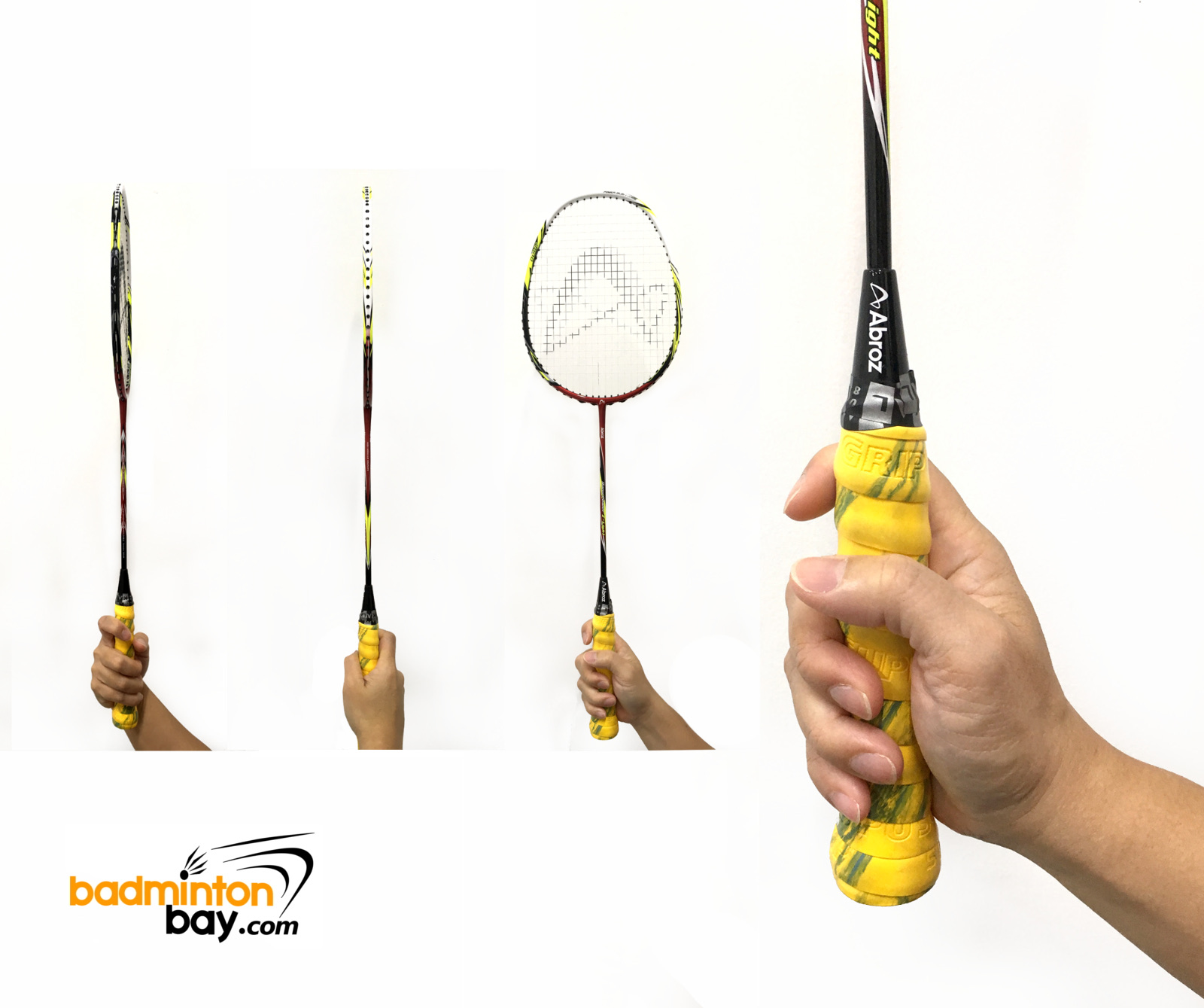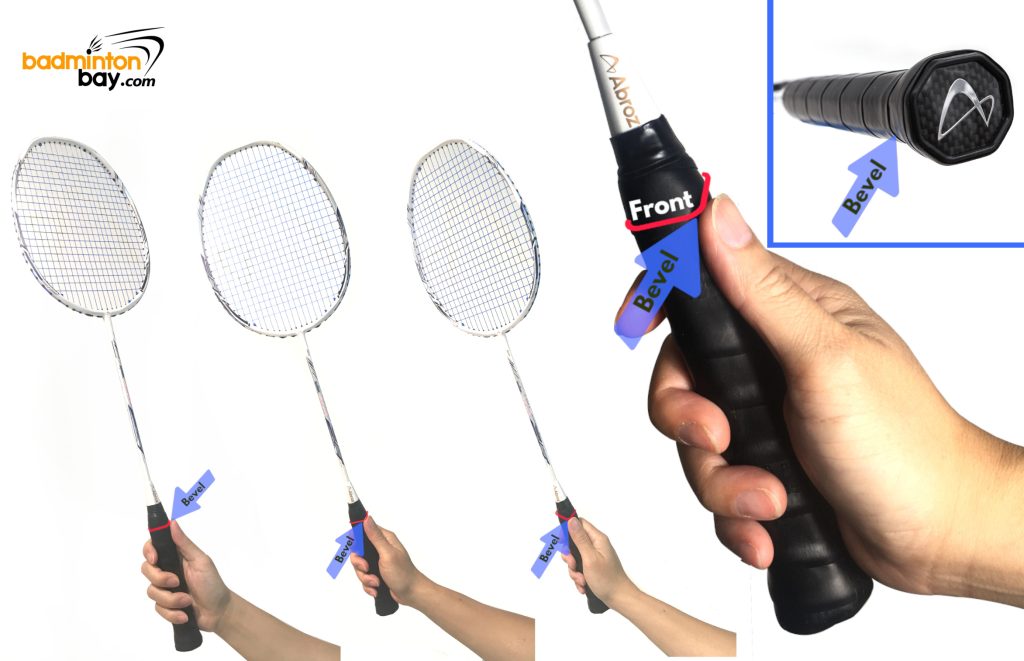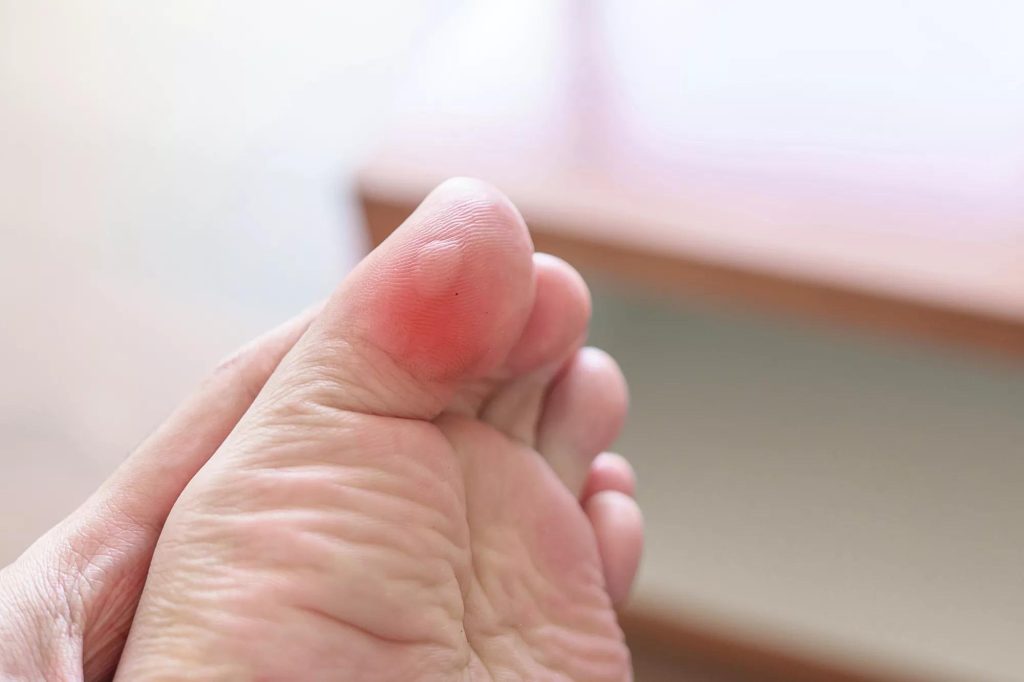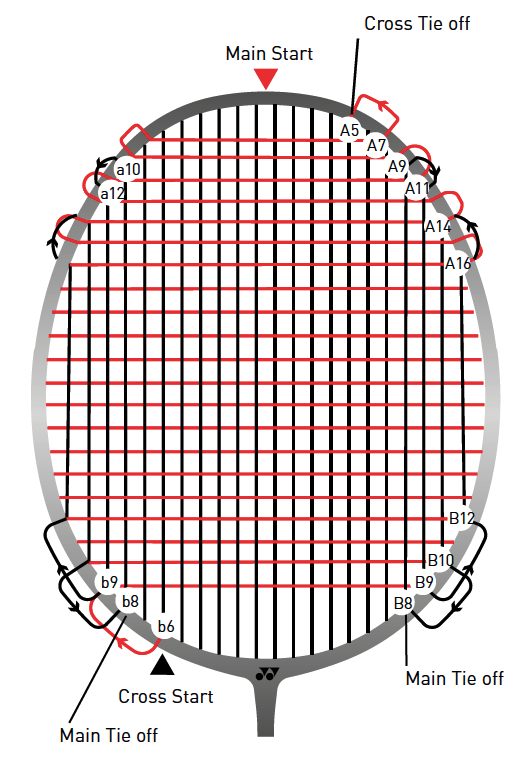Gripping a badminton racquet correctly is crucial for performance. It impacts your control and power.
Badminton is a fast-paced game that requires precision and skill. One essential skill is how to grip your racquet properly. A correct grip helps you play better and prevent injuries. It might seem simple, but many players struggle with it.
This guide will show you the right way to hold your racquet. Whether you’re a beginner or an experienced player, mastering your grip can improve your game. It’s the foundation of all your shots. Let’s dive in and learn how to grip your badminton racquet correctly.
Importance Of Proper Grip
The way you grip your badminton racquet can make or break your game. A proper grip ensures better control, power, and precision. It also helps in executing various shots with ease. Understanding the importance of a proper grip can elevate your performance and reduce the risk of injuries. Let’s explore why having the right grip is crucial.
Impact On Performance
A proper grip directly impacts your performance in badminton. With the right grip, you can:
- Generate more power in your shots
- Enhance your control over the shuttle
- Execute different types of shots effectively
Using an incorrect grip can lead to mishits and reduced accuracy. It can also make it difficult to switch between shots quickly. Therefore, mastering the correct grip is essential for improving your overall game play.
Prevention Of Injuries
Holding the racquet correctly also helps in preventing injuries. An improper grip can put unnecessary strain on your wrist, elbow, and shoulder. This can lead to conditions like:
- Tennis elbow
- Wrist strain
- Shoulder pain
By using the correct grip, you distribute the force evenly across your hand and arm. This minimizes the risk of injury and allows you to play for longer periods without discomfort.
Types Of Grips
Gripping your badminton racquet correctly is crucial for playing well. Different grips suit different shots. Understanding these can improve your game. The two main grips are the Forehand Grip and the Backhand Grip.
Forehand Grip
The Forehand Grip is used for most of your shots. It feels natural and powerful. To hold this grip:
- Place the racquet face down.
- Hold it like shaking hands with someone.
- Your thumb should rest along the side of the handle.
- Your index finger should be slightly separated from the rest.
This grip allows for great control and power. It’s ideal for smashes and clear shots. Remember to keep your hand relaxed. Too much tension can hinder your movement.
Backhand Grip
The Backhand Grip is used for shots on the opposite side. To hold this grip:
- Start with the Forehand Grip.
- Turn the racquet 180 degrees.
- Place your thumb against the back of the handle.
- Keep your other fingers relaxed around the handle.
This grip is perfect for backhand serves and drives. It gives you the angle you need for these shots. Always switch grips depending on the shot you are making.
| Grip | Ideal for |
|---|---|
| Forehand Grip | Smashes, clear shots |
| Backhand Grip | Backhand serves, drives |
Both grips are essential for a balanced game. Practice them regularly to get comfortable. Switch between them quickly during a match. This skill can set you apart from other players.
Choosing The Right Grip
Choosing the right grip for your badminton racquet is crucial. It impacts your control and power during a game. A proper grip can enhance your performance. Let’s explore how to choose the right grip.
Grip Size
Grip size affects your comfort and control. A grip that is too small can make your hand tense. A grip that is too large can reduce your wrist movement. To find the right size, hold the racquet as you normally would. There should be a small gap between your fingers and palm. This gap should be about the width of a pencil. If the gap is smaller, the grip is too small. If the gap is larger, the grip is too big.
Grip Material
Grip material plays a key role in your comfort and performance. There are two main types: synthetic and towel grips. Synthetic grips are durable and provide a good grip. They are also easy to clean. Towel grips offer better sweat absorption. They are softer and more comfortable. But they may need more frequent replacement.
Choose a grip material that suits your playing style and conditions. If you sweat a lot, a towel grip might be better. If you want a durable option, go for a synthetic grip.
Step-by-step Guide To Forehand Grip
Gripping a badminton racquet properly is crucial for control and power. The forehand grip is one of the most basic and important grips. This step-by-step guide will help you master the forehand grip.
Position Your Hand
Start with your racquet facing you. Hold it with your non-dominant hand. Imagine shaking hands with the racquet. Place your dominant hand on the handle. Your palm should rest on the wide part of the handle. This is the basic position for the forehand grip.
Correct Thumb Placement
Place your thumb on the side of the handle. It should not be on the back of the handle. Your thumb helps provide stability and control. Ensure the thumb is relaxed, not pressing too hard. This helps in maneuverability during play. Always keep your grip firm but not too tight.
Practice this grip often. The more you practice, the better your control. This will lead to improved performance on the court.
Step-by-step Guide To Backhand Grip
Mastering the backhand grip is essential for effective badminton play. This guide will walk you through the steps, ensuring you have a firm and comfortable grip. Let’s dive into the details.
Adjust Your Hand
First, hold the racquet with the non-dominant hand. Keep the racquet head facing downward.
Place your dominant hand on the handle. Your thumb should be on the wider side of the handle.
Ensure your hand is relaxed. Avoid gripping too tightly. This will help in better control and flexibility.
Proper Finger Placement
Wrap your fingers around the handle. Your index finger and thumb should form a V shape.
The middle, ring, and pinky fingers should wrap around the handle comfortably. Ensure there is a slight gap between your fingers.
Your thumb should rest on the wider side of the handle, pressing gently.
A proper grip ensures better control and precision in your backhand shots.
| Step | Description |
|---|---|
| 1 | Hold the racquet with the non-dominant hand |
| 2 | Place your dominant hand on the handle |
| 3 | Form a V shape with your thumb and index finger |
| 4 | Wrap the remaining fingers around the handle |
| 5 | Relax your hand for flexibility and control |

Credit: www.tick.co
Common Grip Mistakes
Gripping a badminton racquet correctly is crucial. It affects your game performance. Many players make common grip mistakes. These mistakes can lead to poor shots and injuries. Understanding and fixing these errors is essential.
Too Tight Grip
A too tight grip is a frequent mistake. This can reduce wrist flexibility. It leads to less control and power.
- Causes muscle fatigue quickly.
- Limits your ability to maneuver the racquet.
- Increases the risk of injuries.
Instead, try to hold the racquet gently. Think of holding a bird. You don’t want to crush it. A relaxed grip allows for better control.
Incorrect Finger Position
Incorrect finger position is another common error. Your fingers should wrap around the handle, not overlap each other.
- Place the base knuckle of your index finger on the wider side of the grip.
- Wrap your other fingers around the handle comfortably.
- Your thumb should rest against the wider surface.
Incorrect finger positions can cause mishits. It also affects your shot accuracy. Ensure your fingers are correctly positioned for better performance.
| Common Grip Mistake | Effect | Solution |
|---|---|---|
| Too Tight Grip | Muscle fatigue, limited movement | Hold racquet gently |
| Incorrect Finger Position | Mishits, poor accuracy | Wrap fingers correctly |
Enhancing Your Grip
Improving how you hold your badminton racquet can boost your performance. A good grip helps with control and power. Let’s explore some methods to enhance your grip.
Using Overgrips
Overgrips can make a big difference. They provide extra cushioning and better traction. Here is how you can use overgrips effectively:
- Choose the Right Overgrip: Select an overgrip that suits your hand size and comfort.
- Wrap Properly: Start from the bottom of the handle and wrap upwards. Ensure it is tight but comfortable.
- Replace Regularly: Overgrips wear out. Change them when they become slippery or lose cushioning.
Overgrips help in maintaining a firm hold and reduce slippage during intense matches.
Maintaining Your Grip
Maintaining your grip is crucial for consistent performance. Here are some tips:
- Clean Your Racquet: Keep the handle clean. Sweat and dirt can make it slippery.
- Use Grip Powder: Grip powder can absorb moisture. It helps in maintaining a dry and firm grip.
- Check for Wear: Inspect your grip regularly for any wear and tear.
By following these steps, you can ensure your grip remains effective and reliable.

Credit: www.youtube.com
Practice Drills For Grip Mastery
Mastering the grip in badminton is essential for control and precision. Practice drills can help you improve your grip technique. These drills will enhance your comfort and skill with the racquet. Regular practice will make your grip feel natural and confident.
Shadow Drills
Shadow drills are a great way to practice grip without a shuttlecock. Stand in front of a mirror. Hold your racquet as if you are playing a real game. Swing the racquet using different strokes. Focus on maintaining the correct grip throughout.
Use forehand and backhand strokes. Repeat the movements multiple times. This helps build muscle memory. It also improves grip consistency.
Wall Practice
Wall practice is another effective drill. Stand a few feet away from a wall. Hit the shuttlecock against the wall using various strokes. Focus on your grip while hitting. Adjust your grip as needed for each stroke.
This drill helps improve your reaction time. It also enhances your grip control. Practice regularly for the best results. Keep your grip firm but relaxed. This will help in real game situations.

Credit: blog.badmintonbay.com
Frequently Asked Questions
How To Grip A Badminton Racquet Properly?
To grip a badminton racquet properly, hold it as if shaking hands. Keep your grip relaxed. Ensure your thumb and index finger form a V-shape. This allows better control and power.
What Are The Types Of Badminton Grips?
The two main types of grips are forehand and backhand grips. The forehand grip is used for most shots. The backhand grip is used for backhand shots. Both grips offer control and precision.
Why Is The Correct Grip Important In Badminton?
The correct grip enhances control, power, and accuracy. It prevents injuries and improves performance. A proper grip ensures you can execute various shots effectively.
How Do I Switch Grips Quickly During A Game?
Practice is key to switching grips quickly. Use the bevels on the handle as a guide. Develop muscle memory through repetitive practice. This helps in seamless transitions during fast-paced games.
Conclusion
Mastering a proper grip in badminton is essential. It improves your control and power. Follow the tips shared here and practice regularly. With time, you’ll notice better performance and fewer mistakes. Remember, the right grip can make a huge difference.
Keep practicing and enjoy your game more. Happy playing!



